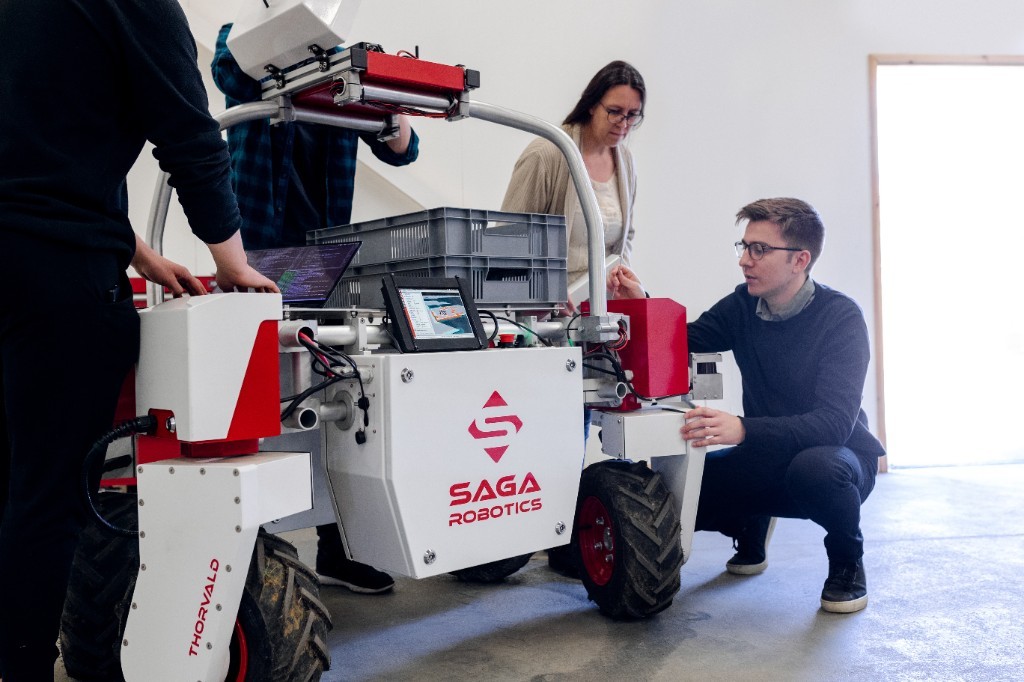In recent years, there has been a significant advancement in the field of Artificial Intelligence (AI) and Augmented Reality (AR). These technologies have become increasingly popular and have the potential to enhance virtual experiences in various fields such as gaming, education, healthcare, and...
Neural Networks and Robotics: Collaboration and Symbiosis

Advancements in neural networks and robotics have opened up new possibilities for collaborative exploration. The integration of these two fields has given rise to a symbiotic relationship, where the strengths of each are harnessed to create intelligent and adaptive systems.
Neural networks, inspired by the human brain, have the ability to learn and make decisions based on patterns and data. By training these networks, we can develop models that can recognize objects, understand speech, and even predict future outcomes. These capabilities make neural networks a powerful tool for robotics, as they enable machines to perceive and interpret the world around them.
On the other hand, robotics brings physical embodiment to neural networks. By connecting neural networks to robotic systems, we can create machines that can interact with their environment, manipulate objects, and perform complex tasks. This embodiment allows neural networks to go beyond passive data analysis and actively engage with the world, creating a feedback loop that enables continuous learning and improvement.
This collaborative relationship between neural networks and robotics has the potential to revolutionize industries such as healthcare, manufacturing, and transportation. By combining the intelligence of neural networks with the physical capabilities of robots, we can develop systems that can assist in surgery, automate manufacturing processes, and even navigate autonomous vehicles.
As we continue to explore the possibilities of this symbiotic approach, it is important to consider the ethical implications and ensure that these technologies are used for the benefit of humanity. By understanding the collaborative relationship between neural networks and robotics, we can harness their power to create a future where intelligent machines work alongside humans, enhancing our capabilities and improving our quality of life.
The Role of Neural Networks in Robotics
Neural networks have emerged as a powerful tool in the field of robotics, enabling machines to learn and adapt to their environment. These networks are inspired by the human brain and are designed to mimic its structure and function. By using artificial neural networks, robots can process large amounts of data and make intelligent decisions in real-time.
Enhancing Perception and Sensing Abilities
One of the key roles of neural networks in robotics is to enhance the perception and sensing abilities of robots. By training neural networks on large datasets, robots can learn to recognize and classify objects, understand speech, and interpret visual information. This allows robots to interact with their environment more effectively and perform complex tasks with precision.
Neural networks also enable robots to improve their sensor fusion capabilities. By integrating data from multiple sensors, such as cameras, lidar, and GPS, robots can create a more accurate representation of their surroundings. This allows them to navigate autonomously, avoid obstacles, and adapt to changing environments.
Enabling Learning and Adaptation
Another important role of neural networks in robotics is to enable learning and adaptation. By training neural networks on a wide range of data, robots can learn from their experiences and improve their performance over time. This allows robots to adapt to new situations, learn new tasks, and optimize their behavior based on feedback from their environment.
Neural networks also enable robots to learn from each other through a process called transfer learning. By transferring knowledge from one robot to another, robots can benefit from the experiences and skills of their peers. This allows robots to collectively learn and improve their performance, leading to more efficient and capable robotic systems.
Advantages of Neural Networks in Robotics
- Improved perception and sensing abilities
- Learning and adaptation capabilities
- Transfer learning
Challenges and Limitations
- Data requirements for training
- Computational complexity
- Interpretability and explainability
In summary, neural networks play a crucial role in robotics by enhancing perception and sensing abilities, enabling learning and adaptation, and facilitating transfer learning. While they offer many advantages, there are also challenges and limitations associated with their use in robotics. By addressing these challenges, researchers can further unlock the potential of neural networks and advance the field of robotics.

The Advantages of Integrating Robotics and Neural Networks
Integrating robotics and neural networks offers numerous advantages and has the potential to revolutionize various industries. Here are some key advantages:
- Improved Efficiency: By integrating neural networks into robotics systems, machines can learn from experience and optimize their performance over time. This leads to increased efficiency in tasks such as manufacturing, logistics, and healthcare.
- Enhanced Adaptability: Neural networks enable robots to adapt to changing environments and learn new tasks quickly. This flexibility allows robots to handle complex tasks that were previously only possible for humans.
- Increased Accuracy: Neural networks can analyze vast amounts of data and make precise predictions. When integrated with robotics, this can lead to improved accuracy in tasks such as object recognition, navigation, and manipulation.
- Improved Safety: By combining robotics with neural networks, robots can be trained to identify and respond to potential hazards in real-time. This improves safety in industries such as manufacturing, construction, and healthcare.
- Cost Savings: Integrating neural networks into robotics systems can lead to cost savings by automating repetitive and labor-intensive tasks. This reduces the need for human labor, minimizes errors, and increases productivity.
In conclusion, the integration of robotics and neural networks offers numerous advantages, including improved efficiency, enhanced adaptability, increased accuracy, improved safety, and cost savings. As this symbiotic relationship continues to develop, we can expect to see further advancements in fields such as automation, artificial intelligence, and robotics.



